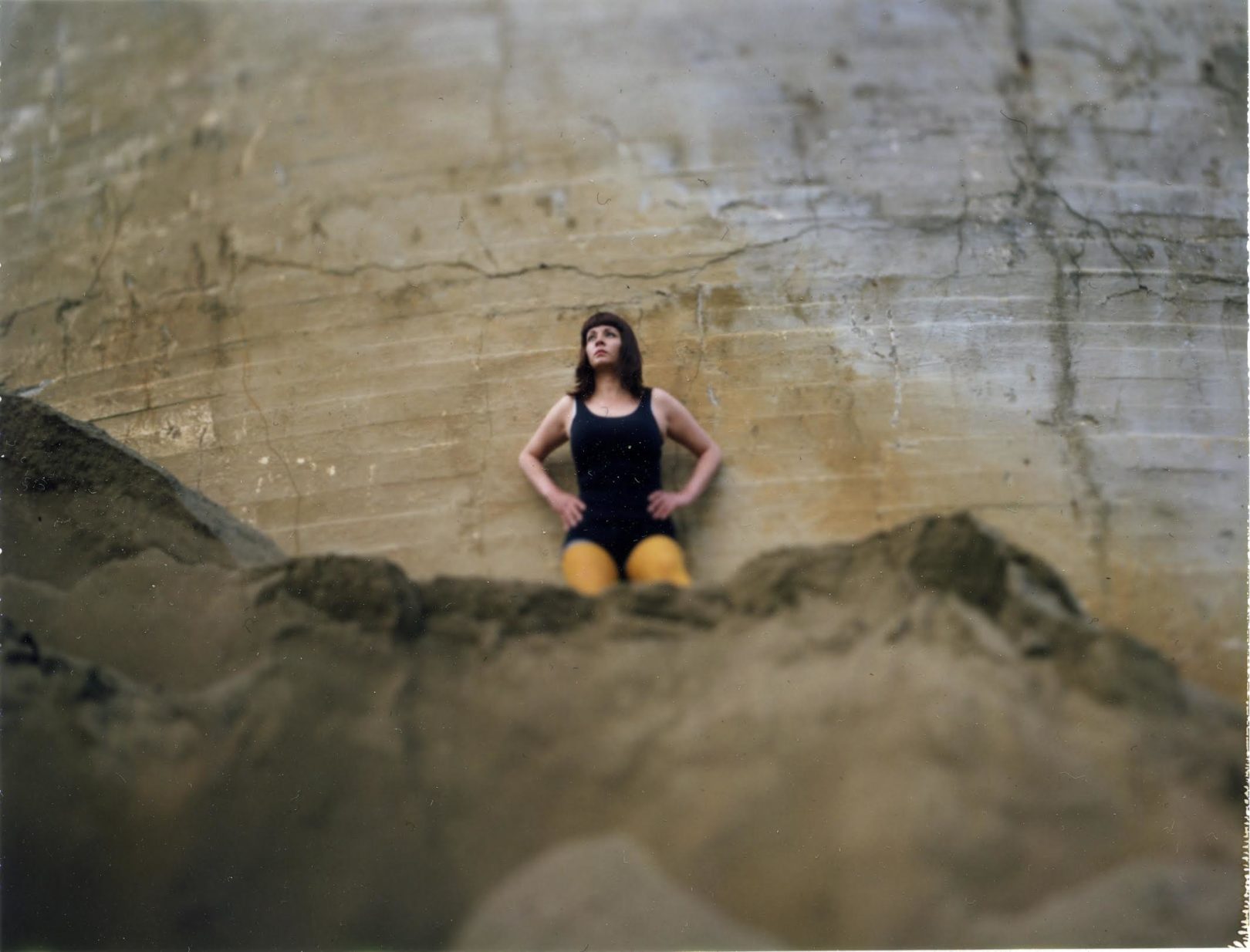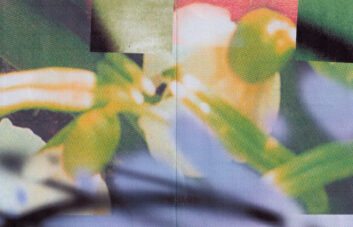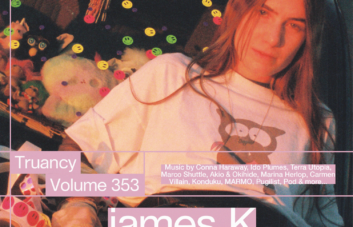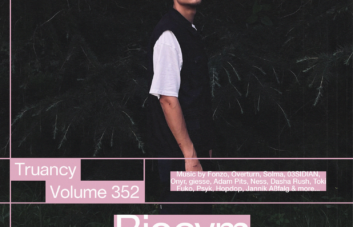In chilly, distant Tromsø — one of the northernmost cities in Norway, known as a great vantage point from which to see the Northern Lights — quests for the electronic underground tend to lead people away. For Charlotte Bendiks, self-described as “the northern ambassador of distant intimacy”, it’s a challenge to keep the spirit of Tromsø alive. Thoroughly committed to building and maintaining a space for the culture in her hometown, Bendiks has worn many hats in the scene: working with the 16-years-strong Insomnia Festival, running a series of underground DIY raves called Moist, working as a projection artist and mentoring local upcomers. On top of all that, she makes and plays music herself. With releases on Hivern Discs and Cómeme, Bendiks describes her musical output as “body music”, drawing upon various percussive styles from leftfield house and disco to traditional Sami folk to cultivate dancefloor sensuality across various tempos.
Bendiks’ work as an artist and DJ grapples with the concept of existing within multiple contexts. There is her hometown Tromsø which is cold, barren, and void of the expansive underground dance culture that other cities such as Berlin and London seem to radiate. Curating music festivals and throwing raves was her way of bringing underground dance culture to Tromsø, and allowing it to stay. There are the German cities of Cologne, where she spent two years sharpening her skills, and Düsseldorf, where she enjoys the opportunity of playing extended sets at Salon des Amateurs. On a personal level, she has occupied space as a performer as well as having taking on multiple behind the scene role.
All of this has taught Bendiks the importance of building the right environment not just for yourself, but for those after you.
You’re referred to as the ‘northern ambassador of distant intimacy.’ What does distant intimacy look or feel like to you? “It’s very hard to explain because it’s more of a feeling. I also think because when I write the bio or talk about my music, I prefer to explain it with words to describe feelings I have that are more abstract and not so concrete because I want people to make up their own minds of how they perceive it. It’s not very concrete, it’s something for me that is very private and I think that has to do with the distant intimacy. But it is also very vulnerable and emotional because it is very personal. I want to keep some of it private, and I don’t want to share every detail and every thought and feeling with everyone. But I can share it abstractly with music, so then I try to describe it like that. For instance, some people describe my music as very depressing and dark, but others say it is very happy and uplifting. I really like that because it is a combination of all of them. That’s what distant intimacy is about: sharing a lot but then also keeping something. It’s not about answering questions, but maybe about finding more questions.“
Do you see space as a recurring idea within your work? “I come from Tromsø in Northern Norway. It is basically the most northern city in the world — it is very tiny and isolating. Urban life doesn’t exist close to the city. When I was growing up, we had no access to underground electronic music — it belongs to the city but all of these artists moved away. We started Insomnia Festival because we were searching for something and we wanted to create an environment that we wanted to be in and be inspired by. By creating Moist and creating rave culture [in] a city where bars closed at 3am, we created a space where people really dive deep into the music for hours. We spent a lot of time creating the decorations, and managing the crowd. That’s [also] what makes a good party: the crowd. Everything so far has been a search to satisfy some sort of emotional need of feeling something or creating something and everything I do has been building off that.”
You’ve been doing things in Tromsø since you were a teenager. How have things changed since your involvement? “I don’t think so much about it because when you’re up there, it’s so small and everyone knows each other. Now there’s a whole new generation of artists making music, DJing, and throwing parties. A couple of them, I have been mentoring them through this program. A few of them have been like, “You were the first that did this, I’m very inspired by you.”
“I’m very happy about that. But I also thought a lot about it since I started mentoring, because when we started, we experienced so much resistance and bad attitudes. There was only a couple of people who let us into their small bars. That [was] pretty harsh and I still feel that insecurity of pushbacks whenever I play. I never want to do that to anyone else.”
What is it that makes a great party great? “It has a lot to do with the presentation of it — I don’t mean design. ‘How it is presented’ means both how it is made public, the design of the room, and also, how it attracts the right crowd. It is important to have an open-minded crowd who are ready to be surprised and ready to be taken somewhere. They expect to hear things they have never heard of before and they are searching for that feeling. Also, like the way you build the lineup. I noticed it here at Mutek — it’s one of the best curated festivals I’ve seen because of the way they build the stages with the acts. They go together. When I saw Boska play with Pursuit Grooves, it was really good because it fit perfectly. Programming is like DJing, you have to build the nights — that’s very important to me that I have to be part of a fitting lineup. It’s also nice to have a good sound system, but to be honest, if you have a beautiful space but a shitty JBL sound system you can make something happen.”
You make do with what you have. “Exactly.”
How does the size of the physical space and audience affect how you play? “In smaller, intimate places where you have more time, it is more of a dialog. I can see all the faces, body parts and how they move. There’s maybe more risk-taking because it’s easier to read the body language. If it is a bigger crowd, it is more of a monolog but of course, they still have to respond. It’s more of a distant intimacy haha. I have to rely more on myself than actually working with the crowd. But this all has to do with what happens before and after, and how long the set is. It’s more about the amount of time than people.”
You had a “Eureka!” moment about techno after someone showed you a Derrick May record. Have you had any others? “After the Derrick May record, I started digging for new sounds all the time. I had many smaller ones because I started digging in subgenres, old and new music. I also have eureka moments when I listen to other DJs and live acts. How they perform, and how they present the tracks and how they put tracks together in a mix. I had one at Dekmantel, I was watching Khidja from Romania, they did a fantastic remix for Virginia… They played their own remix live and I was like, “I can play my own remix live!””
Tromsø and Cologne are two particular cities that have had a significant impact on you. Is there any particular city that has had a lasting impact? “I play in Bucharest, I play there a lot, I am very connected — I have a lot of close friends there as well as the queer community. This year I opened their Pride and Peaches was closing, so I felt very honored to be opening for such a big star. Their nightlife and queer scene is very small — it’s nothing like Berlin and London. It’s so small, but it’s so real. It’s run by these key figures who are very risk-taking and experimental. The underground of Bucharest, I feel at home there.”
It sounds like a very fun house party. “Every time I play there, it is very free and beautiful.”
You’re playing a new live set with Boska and it seems like you two have a very close working relationship. Can you speak more about that? “We have a live set, and we changed three of the tracks and made new versions of two old ones. It’s very improvised, we never really play the same live set. We’re very good friends and he knows me and my music very well, so we don’t have to talk. We made a lot of music together before, especially when I first started because he studied music and he was more technical. When I first started, I learned a lot from him about the technical stuff and sound mixing. [Boska] was a big part of my earlier releases and we used to get together a lot and jam together.”
Finally, when was the last time you danced and what was the last thing to bring a proper smile to your face? “The last time I danced was at yesterday’s Mutek events. This festival is filled with so many amazing artists that one can dance and discover new music every day. The last proper smile I had on my face was when I saw my dear friend Boska’s live show at the Experience stage this Thursday. He played a very beautiful improvised live show in the golden hour of sunset.”
Charlotte Bendiks: Facebook, Soundcloud, Twitter, Instagram, Resident Advisor
Words by Sofia Luu.





Good article! We are linking to this great article
on our website. Keep up the good writing. generic viagra